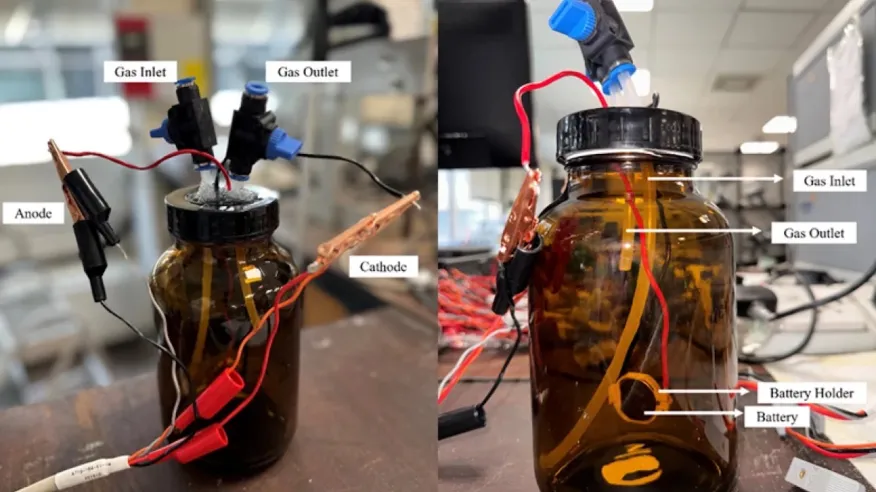
Wafricnews - June 14, 2025
In a stunning development that could reshape the future of green technology, researchers at the University of Surrey have created a revolutionary battery that not only stores energy — but also scrubs harmful carbon dioxide from the atmosphere as it operates.
In a stunning development that could reshape the future of green technology, researchers at the University of Surrey have created a revolutionary battery that not only stores energy — but also scrubs harmful carbon dioxide from the atmosphere as it operates.
Dubbed the "lithium-CO₂ breathing battery," this breakthrough combines energy efficiency with environmental clean-up, offering a powerful double-punch solution to climate change. The new tech improves upon previous versions of CO₂-based batteries, which had been largely theoretical due to short lifespans and high energy consumption.
But this latest innovation swaps expensive, rare materials for a budget-friendly compound known as cesium phosphomolybdate (CPM) — a game-changing shift that makes the battery cheaper, longer-lasting, and more powerful.
“Our work on lithium-CO₂ batteries is a potential game-changer,” said Dr. Siddharth Gadkari, lead researcher and chemical process engineering lecturer at the university. “It supports renewable energy storage while actively fighting climate change.”
Unlike regular batteries, this tech ‘breathes in’ carbon dioxide, reacting with the gas to generate electricity while locking it inside — turning pollution into power.
According to Dr. Daniel Commandeur, another key member of the team, the real magic lies in the simplicity.
“We’ve proven that you don’t need rare metals to build high-performance energy tech. Affordable, scalable materials can get the job done — and clean the air while doing it.”
The researchers solved a major flaw that plagued previous designs: overpotential — the energy waste needed to make the battery work. Thanks to CPM, the battery now runs more efficiently, reducing energy losses by flattening the metaphorical “hill” the battery must climb each cycle.
The team combined hands-on lab work with sophisticated simulations to monitor how the reactions unfolded inside the battery. They found that CPM provided a porous, stable structure ideal for absorbing and releasing CO₂ reliably.
While the technology is still in its early stages, its potential applications are far-reaching — from solar power storage and electric vehicles, to even terraforming missions on Mars, where carbon dioxide dominates the atmosphere.
If developed further, this battery could transform power systems in African cities, rural solar projects, and beyond — creating cleaner air, reducing costs, and offering new hope in the global climate fight.
The message from Surrey is loud and clear: the future of energy may not just be green — it might be breathtaking.
By Wafricnews Desk.
By Wafricnews Desk.


Comment
To post a comment, you have to login first
LoginNo Comments Yet...